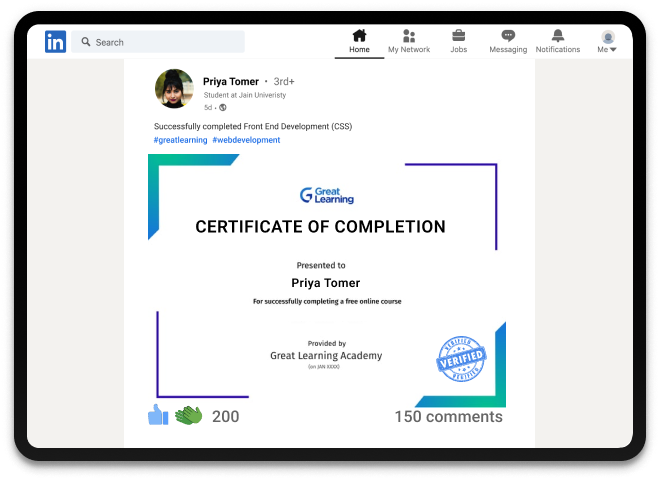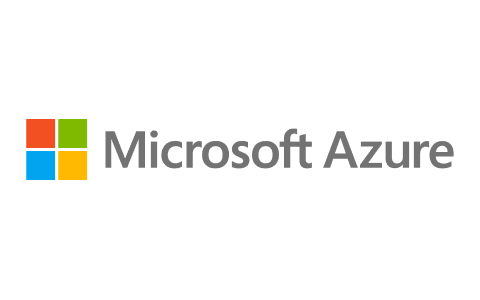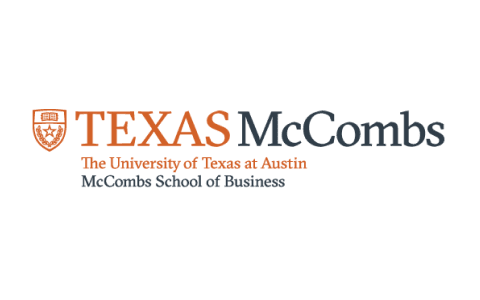Linux Tutorial
free linux course
Comprehend Linux basics with this beginner's free Linux tutorial. Get familiar with Linux operating system and understand its history, benefits, architecture, components, and basic commands.
What you learn in Linux Tutorial ?
About this Free Certificate Course
This free Linux course is your gateway to mastering this robust and adaptable operating system. Dive into the fundamentals of operating systems as we guide you through Linux's installation, setup, and key features. Explore the architecture, components, and benefits of Linux while gaining insight into various distributions and the distinctions between Linux and Unix. Through hands-on sessions, you'll become acquainted with the Linux interface, basic commands, and essential functionalities. Enroll now to unlock the power of Linux and receive a complimentary certificate upon course completion. Don't miss this opportunity to elevate your skills with our free Linux course.
Sharpen your software skills by learning advanced software development techniques through Great Learning's Best Software Engineering Courses. Enroll in the program that fits your career goal and achieve a course completion certificate.
Course Outline
An operating system is a fundamental computer system component that provides users with an interface to the underlying hardware. This module explains the operating system and its importance in computer systems.
Linux is a computer operating system that is free and open source. This module discusses Linux operating system and its history in detail.
Unix is a multi-user, multitasking operating system, and Linux is a Unix-like operating system, and both are widely used in server and desktop environments. This module explains the difference between Linux and Unix.
A Linux distribution is a software cluster that includes the Linux kernel and other softwares typically used with a Linux system. This module discusses different Linux distributions and helps you understand why we have these different distros.
In this module, you will learn Linux architecture and its components.
With this course, you get
Free lifetime access
Learn anytime, anywhere
Completion Certificate
Stand out to your professional network
2.0 Hours
of self-paced video lectures
Frequently Asked Questions
What are the prerequisites required to learn this Linux Tutorial course?
No prerequisites are required to register for this free Linux course as it is a beginner-friendly course.
How long does it take to complete this free Linux course?
This course contains 2 hours of self-paced video content.
Will I have lifetime access to the free course?
Yes, you can revisit this free course anytime to recall Linux concepts.
What are my next learning options after this Linux course?
You can enroll in Great Learning's Full Stack Software Developer Course after completing this free Linux Tutorial.
Is it worth learning Linux?
Yes. Linux is an incredibly versatile operating system that can be used for anything, from running a web server to playing high-end video games. Programmers and developers frequently choose Linux for coding, which is not just open source but also secure and stable.
Success stories
Can Great Learning Academy courses help your career? Our learners tell us how.And thousands more such success stories..
Related IT & Software Courses
Popular Upskilling Programs
Explore new and trending free online courses
Relevant Career Paths >
Other IT & Software tutorials for you
Linux Course
Why Linux?
Linux is currently gaining popularity around the world. It's found in practically all of the devices we use on a daily basis. Linux, which is based on UNIX, allows your system hardware and software to connect with one another. Android runs on Linux, which is one of the most stable operating systems available. Linux now powers 90 percent of all cloud infrastructure and 74% of all smartphones on the planet. Linux is also free and simple to install, and it is offered under an open-source license. The various Linux versions are referred to as distributions and are categorized as follows:
-
Mint
-
Debian
-
Ubuntu
-
openSUSE
-
Manjaro
-
Fedora
-
Elementary
-
Zorin
-
CentOS
-
Arch
Top Reasons to prefer Linux
-
High security- The simplest way to avoid viruses and malware is to install and use Linux on your computer. When building Linux, the security factor was considered, and it is far less vulnerable to viruses than Windows.
-
High stability- The Linux operating system is extremely stable and does not crash frequently. Even after several years, the Linux OS runs as quickly as it did when it was originally installed.
-
Ease of maintenance- The Linux operating system is simple to maintain since the user can easily update the operating system and all installed software from a central location.
-
Runs on any hardware- We all know that with each new Windows OS release, a large number of hardware systems become obsolete since their technical specifications are no longer sufficient to operate the most recent Windows OS.
-
Free- Linux is a completely free operating system, and users do not have to pay anything to use it. All of the essential applications for regular users, as well as sophisticated users, are available. Linux supports a wide range of educational software.
-
Open Source- The most essential feature of Linux is that its source code is freely available since it is classified as free and open-source software (FOSS) (Free and Open-Source Software). This benefits the developer community because members may examine and alter the source code, which is not the case with private software that they can only use. Several countries are working on their own Linux variants.
-
Ease of use- Contrary to popular assumption, Linux has evolved into a user-friendly operating system with a good graphical user interface (GUI). It has practically all of the features that Windows does.
-
Customization- Users have a lot of freedom in customizing the system to meet their needs. Wallpapers, desktop icons, and panels are all available in a variety of styles.
-
Education- For students, this is the most valuable feature since they may use the software to learn how it works before updating and extending the code to meet their needs. This will also assist students in learning the inner workings of an operating system and applications.
-
Support- Linux has a large online community that supports it through various forums. Any question asked in a forum will almost always receive a prompt response, as many volunteers are online and striving to fix problems because they are passionate about Linux.
Linux Features
-
Multi User capability: Multiple users can share system resources such as RAM, hard disc space, and so on. However, they must work on different terminals.
-
Multitasking: By strategically splitting CPU time, multiple functions can be done at the same time.
-
Portability: This does not imply that the file size is lower or that it can be carried on a pen drive or memory card. It indicates that it can work with a variety of hardware.
-
Security: It secures data in three ways: authentication (using a password and login ID), authorization (using permissions to read, write, and execute), and encryption (converts file into an unreadable format).
-
Live CD/USB: Almost all Linux distributions include a live CD/USB that users can use to run/test the software without having to install it.
-
Graphical User Interface (X Window System): Although Linux is a command-line-based operating system, it may be turned to a GUI-based operating system by installing packages.
-
Supports Customizable Keyboards: Because it is used globally, it supports a variety of language keyboards.
-
Application Support: It has its own software repository where users can download and install a variety of programmes.
-
File System: Provides a hierarchical file system for organising files and folders.
-
Open Source: Linux is a community-based development project with code that is freely available to everybody.
How does Linux work?
Linux is a UNIX-like operating system that runs on a wide variety of hardware, from phones to supercomputers. The Linux kernel and a set of software packages are included in every Linux-based operating system to manage hardware resources. Additionally, the Linux operating system contains certain essential GNU tools for managing kernel resources, installing applications, configuring security settings and performance, and much more. All of these tools are combined to form a working operating system.
How to use Linux?
We can use Linux from both an interactive user interface and a terminal (Command Line Interface). Different distributions have slightly different user interfaces, but nearly all commands behave the same way across all of them. Press the "CTRL+ALT+T" keys to start Linux from the terminal. And, to explore more about it, tap the application button in the lower-left corner of your screen.
About Linux course
Linux is in high demand these days. Linux is used in a variety of settings. It has taken over our servers, desktops, smartphones, and even electrical appliances like refrigerators.
You will gain a better knowledge of how computers work if you can navigate via a Linux operating system. Additionally, you can use your Linux fundamentals, such as command-line usage, to aid you with coding.
This free Linux course will help you enhance your Linux skills (certificate is a plus), and you will always have excellent job opportunities. Organizations prefer to hire people who can manage servers, schedule batches, cron jobs, adjust load balancing, and operate exclusively with shell scripts. This allows you to stay ahead of the competition and get a market edge.




















































